THEREN
(Created by Erik Malm)
I spent my youth exploring the forests of Evermeet and learning to hunt from my father.
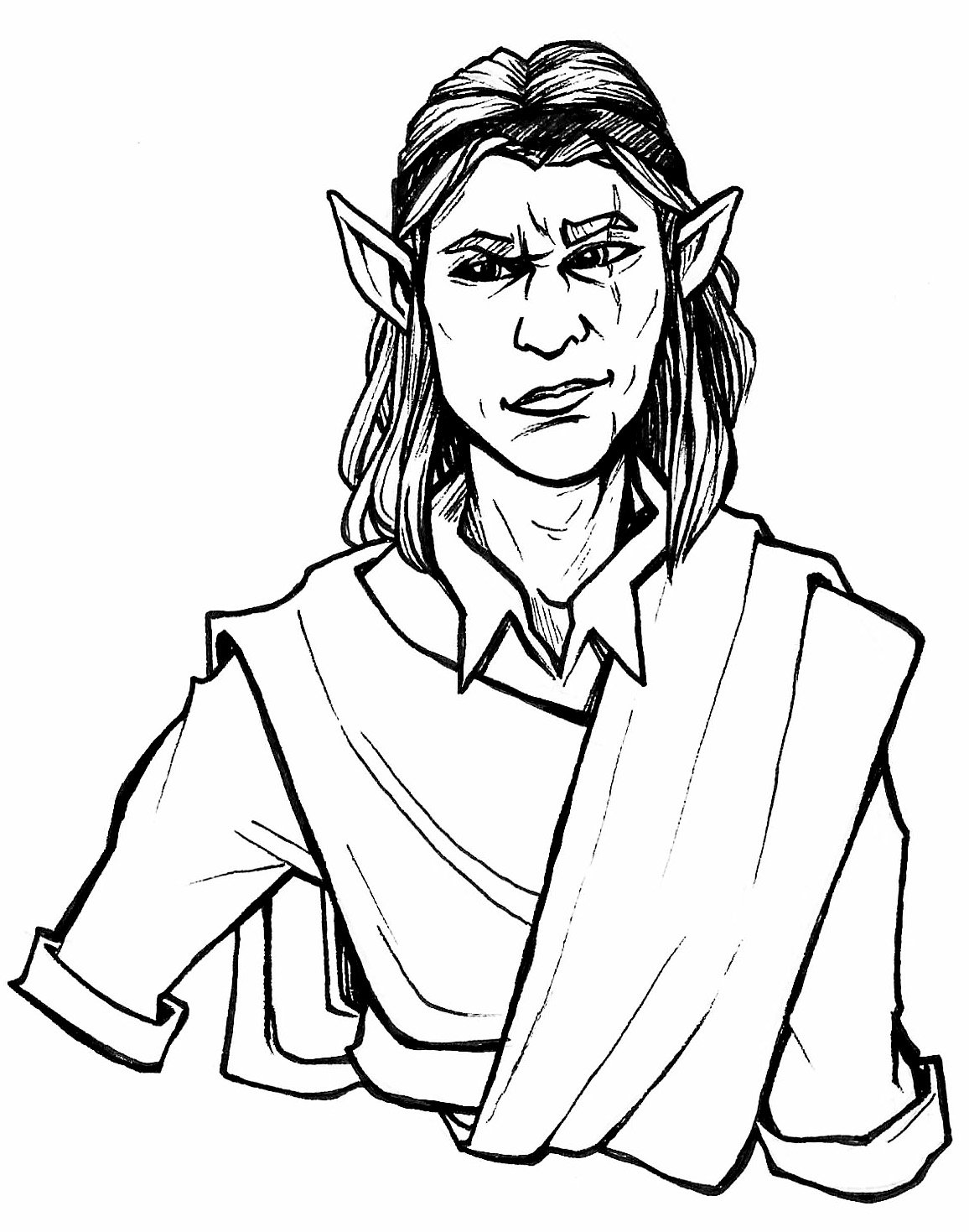 Shortly after coming of age, word reached the wood elves of Evermeet that not only had the ruins of our old home in the Ardeep Forest been overrun by kobolds and other monsters, but a group of humans, led by Lord Nandar of Waterdeep, had begun invading and trying to lay claim to the forest.
Shortly after coming of age, word reached the wood elves of Evermeet that not only had the ruins of our old home in the Ardeep Forest been overrun by kobolds and other monsters, but a group of humans, led by Lord Nandar of Waterdeep, had begun invading and trying to lay claim to the forest.
When Rond Arrowhome set sail with an army of wood elves to take back and protect the forest, I volunteered to join them. I was trained as a ranger and soon became an expert at hunting both humans and kobolds.
Now that the forest is once again safe, I prefer to spend my days alone with nature – exploring, observing, and experiencing the constant change and unpredictable events of the natural world. I especially love the power, beauty, and unpredictability of thunderstorms and have developed a connection to Aerdrie Faenya, though I am one of the few non-avariel who worship her.
I am always happy to help out lost travelers (who mean the forest no harm) or anyone else in need, though I remain distrustful of the wealthy elite like the Nandars of Waterdeep.
DESCRIPTION: Theren has copper-colored skin with a dark-brown/copper-colored hair (like dark, tarnished copper).
His clothes palette is standard dark forest colors; the sort of thing that would help with camouflage in Ardeep – deep greens, browns, dark grey/black. Theren’s original clothing would be elvish and probably trend more towards just greens and browns, emphasizing dark versions of those colors instead of a true black. (That said, the longer he’s in the city, the more likely he is to start wearing some greys that woud match stonework, etc. Maybe fewer greens as well, or even normal Waterdhavian clothing of a fashionable sort, but with subdued colors.) It’s ultimately all about camouflage; to blend into his environment.
Theren is 5’10”. Green eyes.
Hair is straight and shoulder length. Normally he just keeps it tucked behind his ears, which tends to keep it in place fairly well due to elvish ears being tall and pointy. But if it’s particularly windy (or similar conditions where his hair might obscure his vision), he’ll either wear a headband or tie his hair back.
There’s nothing particularly remarkable about Theren’s facial features – typical elvish face with thinner and more angular features than the average human. Rather, what is remarkable is the way that his life and outlook affect his skin, underlying musculature, and how he carries himself:
Theren has spent much of his life outdoors – baking in the sun, holding night-long vigils in the deep of the forest, and facing unafraid the heavy winds and storms which he is particularly fond of as a ceraunophile and worshiper of Aerdrie Faenya. Consequently, I think of Theren as looking a little weatherworn (or, at least, weatherworn for a young elf). It’s not that he necessarily looks particularly aged or beaten down by the elements, more like that subtle difference between how high quality furniture kept on a patio looks ever so slightly different than the exact same furniture kept in a three-season porch at the end of summer. He looks just a little out of place indoors and looks like he’s where he belongs when outdoors.
Similarly, his musculature looks just a little different than the average elf. He’s not particularly muscular or anything, though he still has an athletic build, but his muscles are all incredibly dense – like a rock climber’s, a farmer’s, or anyone else who’s primary form of exercise is one of intense and continuous use of their entire body. This also applies to the underlying musculature of his face, making him look a little extra solid/rugged/durable. I suppose it may look a little formidable in some cases, but Theren isn’t really threatening, scary, or even particularly imposing, he just looks like someone you’d rather not pick a fight with or try to rob.
His demeanor, posture, and manners have also been affected by his relative solitude and preference for the wilds. Having spent much of his time alone when he doesn’t need to worry about what others think about him, he displays his emotions a little more readily, he is a little more likely to speak his mind, his manners are a little more unchecked, and his posture and physical mannerism are a little more informal than a typical elf. To be clear, he’s still an elf raised on Evermeet, and a non-elf probably wouldn’t even notice anything at all, but to other elves he seems a little… wild/feral.
Finally, although his regular demeanor might be a bit more wild and relaxed, he also has a hunter mode that he shifts into when stalking prey or facing enemies. When he’s in this mood, he appears more cold, calculating, and emotionless. Unlike the differences described above, which might not be noticed by a non-elf, this shift is significant enough that everyone except the most unobservant can tell he’s hunting something or someone.
CREATING THEREN
The thing I always marvel at when revisiting Theren’s background is the intense depth of the physical description. I’ve had other players create similarly detailed descriptions, but usually it’s because EVERYTHING is lavishly detailed. The ratio between Theren’s physical description and everything else in Theren’s character background seems crazy at first glance.
But it works. And it’s a valuable reminder that everyone will have different touchstones that are most effective for them. (This will often depend not only on the player, but also the specific character.)
Look at how much amazing, actionable detail Erik works into Theren’s physical description! It’s all about blending into his environment? He’s a little bit uncomfortable inside? That’s gold. Even simple, specific physical actions like when/how he tucks back his hair.
PUBLIC INTEGRATION: Erik was the least versed in the Forgotten Realms at the table. Ironically, we ended up doing the most digging into the weird, esoteric corners of Realms Lore with his character.
The origin point was a simple question: Where would an elf ranger be from?
Evermeet was an easy answer: Big elven kingdom. Just across the ocean from Waterdeep. (Maybe he could be somehow tied into the maritime adventures of Kitti and Pashar?)
On the other hand, where might a wood elf live near Waterdeep? That led us to Ardeep Forest. And that’s where we really started digging in. I forget the exact path we followed, but I ended up not only pulling information from Lost Empires of Faerûn, but also tracking down an obscure article about the forest that was written by Ed Greenwood and published in Dragon Magazine #270.
There was also more recent lore, revolving around a conflict between Lord Nandar of Waterdeep and the elves of Ardeep in the 1470s. (The Waterdeep connection, however tenuous, made this appealing.) I was not particularly familiar with this era (and not at all familiar with these events), but they were intriguing.
PRIVATE INTEGRATION: The only thing of note here that I recall is that Volo was the “author” of the Dragon Magazine article. This didn’t really have anything to do with integrating the character into the campaign, but giving Erik a copy of the article was a nice way to subtly establish Volo’s existence for a player who otherwise wouldn’t be familiar with the name when it was dropped in the first session.
BRINGING THE PARTY TOGETHER: The key question which remained was how Theren would be pulled into Waterdeep. (Remember that every player needed to explain how their character ended up walking through the doors of the Yawning Portal at the beginning of the campaign.)
We looked at a few options, but what stuck was just aiming the Pashar-Kitti vector in the direction of Ardeep Forest: While passing through the forest on the way to Waterdeep, they would have met Theren. After helping him with some local trouble (or possibly being saved by him from local trouble, their mutual versions of the story had very different interpretations of those events), Theren was swayed by Pashar’s sob story and agreed to help him (them, really) raise the ransom money.
It was only six hundred gold pieces, right?
(He was in Waterdeep with them before he discovered that the actual ransom price was… uh… considerably more money than that. He hadn’t sworn an oath or anything… but good gods.)


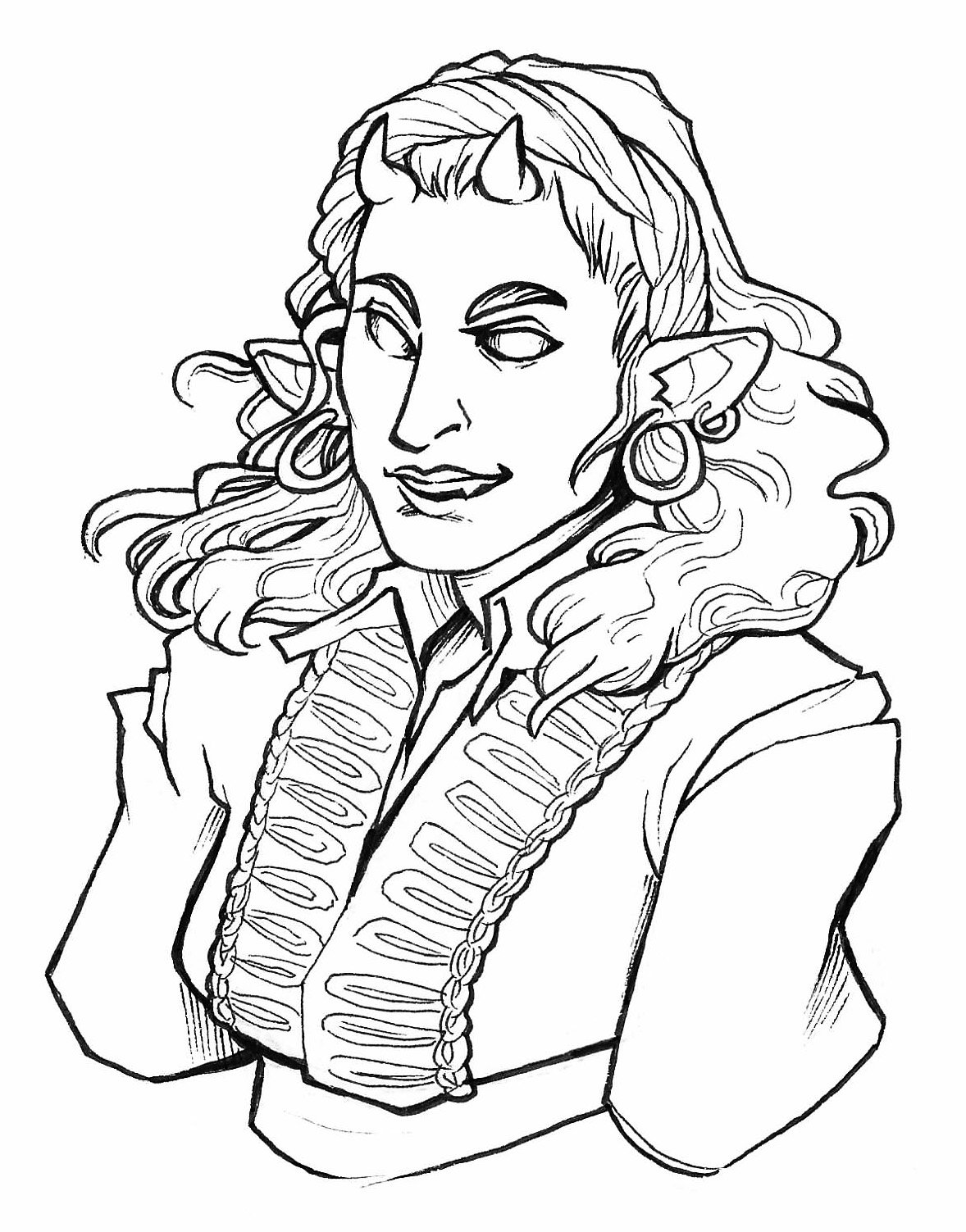
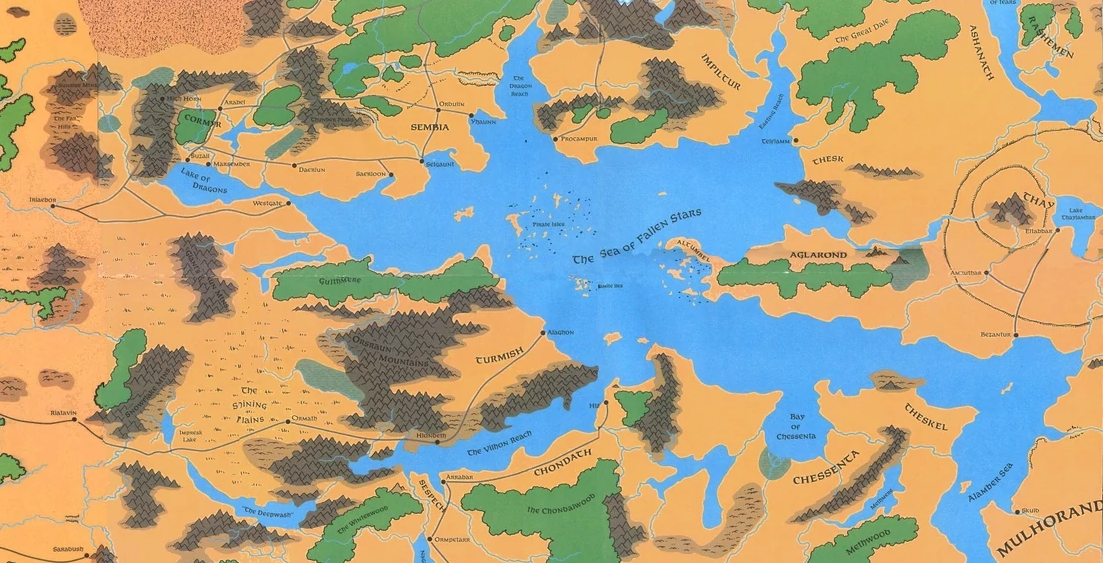

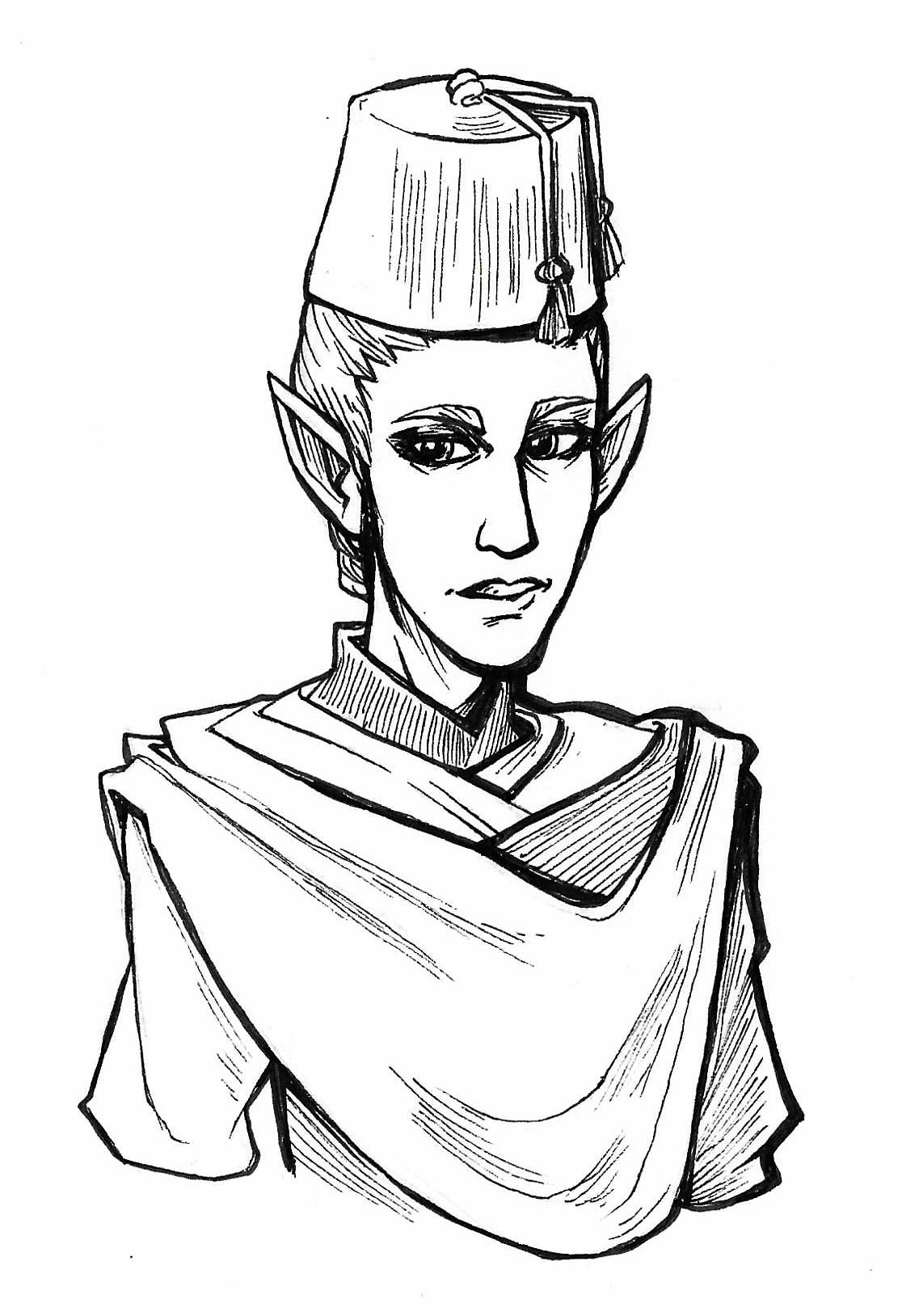
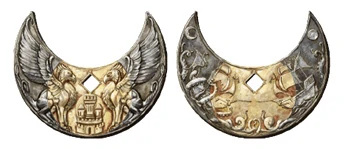 asked me how much money I thought I could get for my mother. And I was like, ‘Thirty thousand gold pieces? How much could thirty thousand be, right?’”
asked me how much money I thought I could get for my mother. And I was like, ‘Thirty thousand gold pieces? How much could thirty thousand be, right?’”









